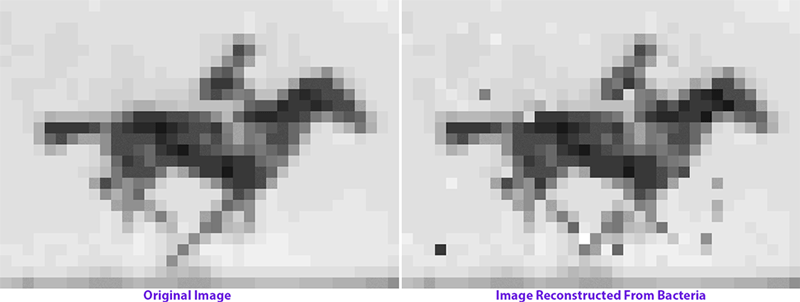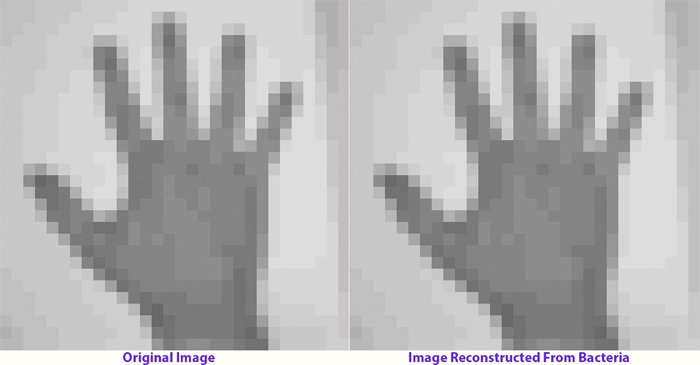
13th July 2017 The first ever movie encoded in DNA Scientists at Harvard have used the CRISPR gene-editing system to store a GIF animation in the DNA of bacteria.
For the first time, a primitive movie has been encoded in – and then played back from – DNA in living cells. Scientists funded by the National Institutes of Health say it is a major step toward a “molecular recorder”. In the future, this could make it possible to get read-outs, for example, of the changing internal states of neurons as they develop. “We want to turn cells into historians,” says neuroscientist Seth Shipman, Ph.D., a post-doctoral fellow at Harvard Medical School, Boston. “We envision a biological memory system that’s much smaller and more versatile than today’s technologies, which will track many events non-intrusively over time.” This proof-of-concept for a futuristic “molecular ticker tape” was published yesterday in the journal Nature. The ability to record sequential events like a movie at the molecular level could reinvent the concept of recording using molecular engineering, say the researchers. In this scheme, cells themselves could be induced to record molecular events – such as changes in gene expression over time – in their own genomes. Then the information could be retrieved simply by sequencing the genomes of the cells it is stored in. "If we had those transcriptional steps, we could potentially use them like a recipe to engineer similar cells," added Shipman. "These could be used to model disease – or even in therapies." The researchers first had to show that DNA can be used to encode not just genetic information, but any arbitrary sequential information into a genome. For this they turned to a revolutionary new gene editing technology, CRISPR. They encoded and retrieved an image of the human hand in DNA inserted into bacteria, before similarly encoding frames from a classic 1870s race horse in motion sequence of photos – an early forerunner of moving pictures.
Over the course of five days, they sequentially treated bacteria with a frame of translated DNA. Afterwards, they were able to reconstruct the movie with 90% accuracy by sequencing the bacterial DNA. "The sequential nature of CRISPR makes it an appealing system for recording events over time," explained Shipman. Although this technology could be used in a variety of ways, the researchers ultimately hope to use it to study the brain. “We want to use neurons to record a molecular history of the brain through development,” said Shipman. “Such a molecular recorder will allow us to eventually collect data from every cell in the brain at once, without the need to gain access, to observe the cells directly, or disrupt the system to extract genetic material or proteins.”
---
Comments »
|








